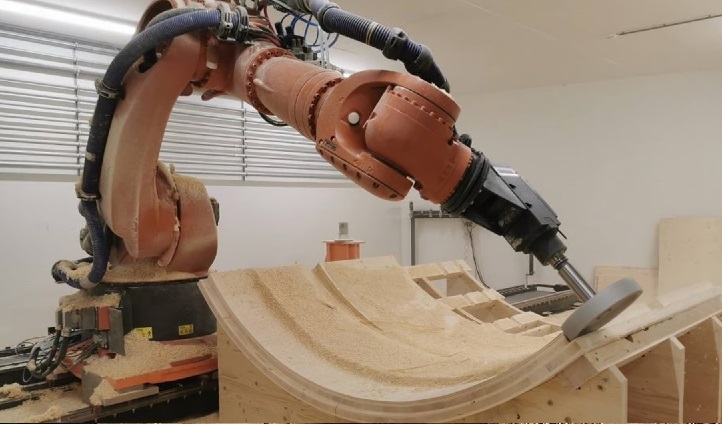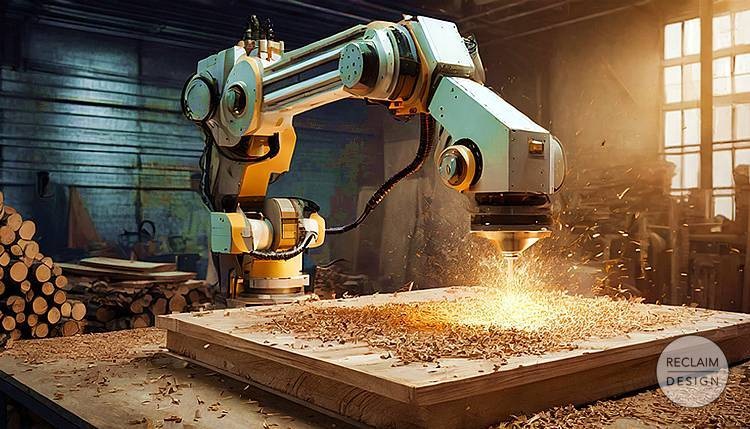Woodworking has long been a craft steeped in tradition, with artisans relying on skill, creativity, and a deep connection to their materials.
Want Faster, More Consistent Woodworking Results?
Click Here to Pick Your Free Gift Now!
Now, artificial intelligence (AI) is making its mark in this age-old practice. While the promise of AI is exciting, it’s essential to consider both its advantages and potential drawbacks.

Tradition Meets Technology
A seasoned woodworker, Lisa, once said, “I never thought I’d use technology in my workshop.” But when she tried AI-driven design software, her perspective changed. She could create intricate designs in minutes, optimize material use, and focus more on her passion for creating unique furniture.

Yet, like Lisa, many woodworkers wonder: What does embracing AI mean for the craft? Will it enhance the art or diminish its essence?
Pros of Using AI in Woodworking
- Efficiency in Design
AI-powered software can generate 3D models, suggest adjustments, and even simulate designs with different materials and finishes. This speeds up the design process and reduces errors.Image placement suggestion: Showcase a comparison of a hand-drawn design and an AI-generated blueprint. - Reduced Waste
By optimizing cut lists and material use, AI helps minimize waste, making your projects more sustainable and cost-effective. - Skill Building
AI-powered tools and online platforms provide tutorials, troubleshoot errors, and recommend techniques. This can be especially helpful for beginners or anyone looking to refine their skills. - Precision Craftsmanship
Integrated with CNC machines, AI ensures accurate cutting and engraving, enabling intricate designs that might be challenging by hand. - Accessibility for Beginners
New woodworkers can use AI to bridge knowledge gaps, gaining confidence through guided design and material selection.

Cons of Using AI in Woodworking
- Loss of Artisanal Touch
Over-reliance on AI might reduce the unique, handcrafted quality that defines traditional woodworking. - Learning Curve
While AI tools can simplify tasks, mastering them requires time and effort, especially for those unfamiliar with technology. - Cost of Adoption
High-quality AI tools and smart machinery come with a significant price tag, which may not be feasible for hobbyists or small-scale professionals. - Dependence on Technology
Relying too heavily on AI could lead to a loss of traditional skills over time, diminishing the essence of the craft. - Environmental Impact of Technology
While AI optimizes material use, the energy consumption and e-waste associated with advanced tools could offset some of the sustainability benefits.Image placement suggestion: Display a visual contrast of a traditional workshop and a tech-enhanced one to highlight the debate.
The Balancing Act: Tradition and Innovation
AI in woodworking is a powerful tool, but it’s not a replacement for the artisan’s creativity and skill. It can streamline processes and enhance capabilities, but the heart of woodworking lies in the maker’s hands.

Embrace the Future While Honoring the Past
The world of woodworking is evolving, and it’s up to us to shape that change. By combining traditional craftsmanship with the benefits of AI, you can create pieces that honor the past while embracing the future.
Start small—experiment with AI tools to see how they complement your style. Stay curious, keep improving, and remember: It’s not the tools that define a woodworker, but how they’re used.
Work Smarter, Not Harder – Click Here to Grab Your Free Woodworking Resource...